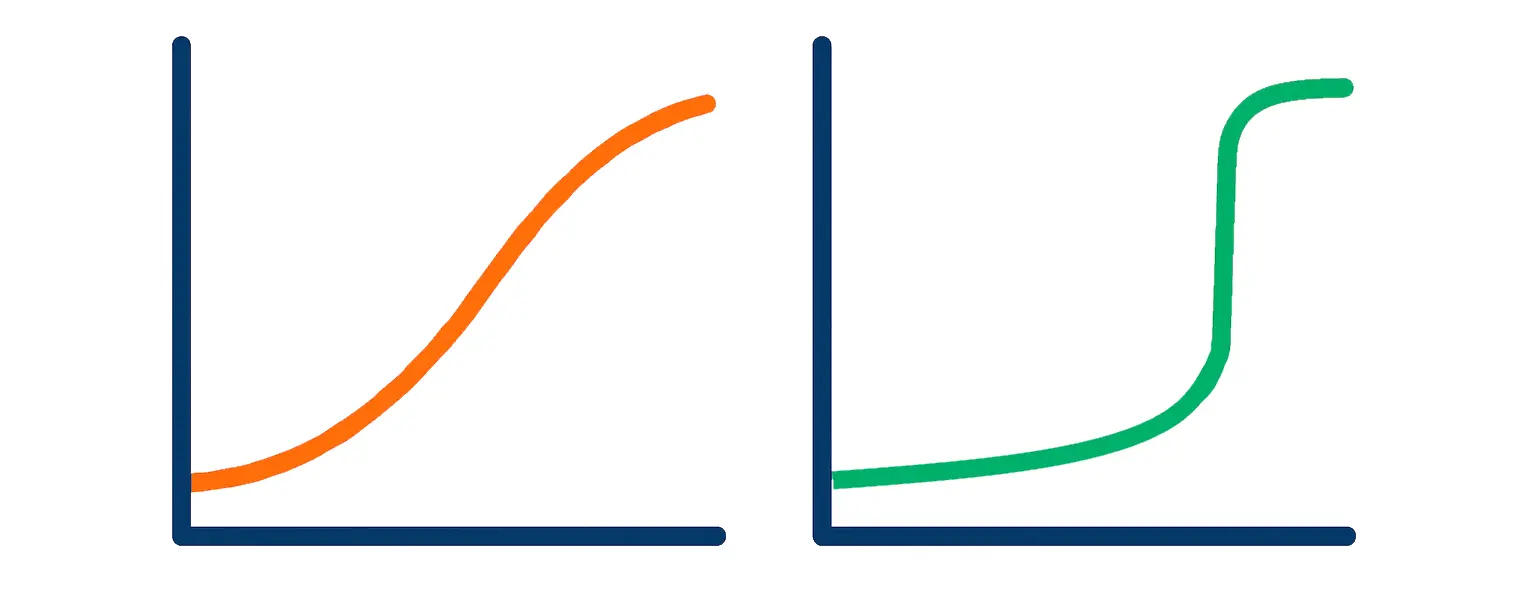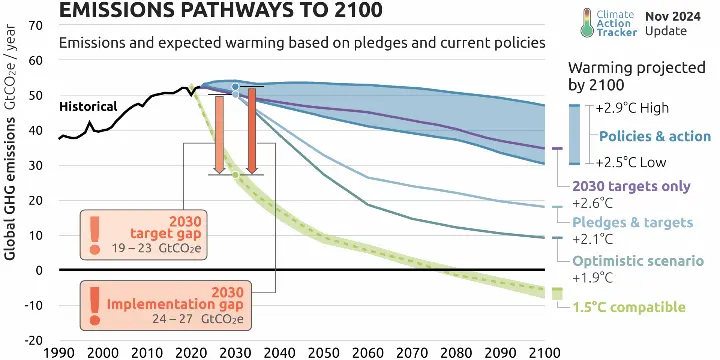Climate Change: The Challenge of Our Time
Climate change is no longer a distant threat discussed in policy halls or academic papers. It’s here: upending lives, displacing communities, and redefining what “normal” means across the globe.
Wildfires consume entire landscapes. Floods submerge cities once thought safe. Crops fail under relentless heat, while oceans warm beyond historic limits.
These aren’t isolated disasters—they signal a global system in crisis. Without action, they are only the beginning.
For decades, we’ve known that greenhouse gas emissions—mostly from burning fossil fuels—are heating the planet. But now, climate impacts are arriving faster and with greater force than predicted. Climate scientists warn that we are nearing, or may have already crossed, dangerous planetary thresholds.
In 2015, the Paris Agreement set a vital goal: limit global warming to well below 2°C, ideally 1.5°C, by 2050. That 1.5°C target isn’t arbitrary. It marks a critical tipping point—beyond it, climate impacts like sea level rise, deadly heatwaves, and ecosystem collapse worsen rapidly, hitting vulnerable communities hardest.
The mid-century deadline was designed to give us time to shift away from fossil fuels and avoid the most catastrophic outcomes. But the reality is more dire: at our current pace, we could exceed 1.5°C this decade.
Every fraction of a degree matters. Each tenth brings higher risks: more lives lost, more nature destroyed, and more irreversible damage locked in. Meeting this moment demands more than promises. It requires bold, immediate, and united global action. The window is closing, but it’s still open.
Climate Action Tracker (2024). 2100 Warming Projections: Emissions and expected warming based on pledges and current policies. November 2024. Available at: https://climateactiontracker.org/global/temperatures/. Copyright ©2024 by Climate Analytics and NewClimate Institute. All rights reserved.
Systems Thinking for a Planet in Crisis
Climate change is more than rising temperatures—it's a systemic shock reverberating across the planet’s natural and human networks. From melting glaciers to political gridlock, from shifting rainfall patterns to disrupted food systems, its effects are far-reaching and interconnected. Tackling it requires more than isolated policies or new technologies. It demands a fundamental shift in how we understand and engage with the systems that shape our world.
At the highest level, Earth functions as a single, integrated planetary system. The atmosphere, oceans, land, cryosphere, and biosphere are not isolated elements; they are dynamically interwoven. A change in one sends ripples through the others. As global temperatures rise, polar ice melts, disrupting ocean currents, altering weather patterns, reducing biodiversity, and releasing carbon from thawing permafrost. These cascading effects form feedback loops that amplify disruption. What begins as a gradual shift can accelerate into runaway transformation.
Just as Earth's natural systems are tightly linked, so too are the human systems layered upon them. Our global civilization rests on four interdependent domains: political, economic, technological, and social-behavioral. These systems shape and reinforce each other in subtle but powerful ways.
The political domain sets climate policy, negotiates international cooperation, and allocates power and responsibility. The economic domain channels investment flows, determines production patterns, and creates incentives—or disincentives—for sustainability. The technological domain defines how we generate energy, move goods, and manage data. The social-behavioural domain reflects individual and collective choices: what people consume, support, resist, or demand. Together, these forces create either momentum for transformation or inertia against it.
Not all components within these systems are equally rigid. Some are deeply entrenched—resistant to change. Others are more adaptive, sensitive to shifts in context or culture. Within every complex system lie leverage points—strategic places where a small shift can trigger outsized effects across the whole. For instance, a change in the political domain such as eliminating fossil fuel subsidies may alter economic incentives, drive innovation in clean technologies, change consumer behavior, and reshape political debates—all domain of human system being impacted by a single policy change.
To confront the climate crisis effectively, we must learn to see these systems clearly: how they behave, where they connect, and how interventions in one domain may cascade through others. It means recognizing early signals of change, reading the patterns that precede tipping points, and acting precisely where impact can multiply.
Climate change is the ultimate systems challenge. Only by thinking in systems and acting through them we can bend the arc of disruption toward resilience, coherence, and renewal.
Human systems – social-behavioural, technological, economic and political – are interconnected. Human systems are also embedded within the Earth system, which means they are subject to their biophysical capacities and tipping points (Stadelmann-Steffen et al., 2021; Rockström et al., 2023).
Gradual Transitions vs. Tipping
When we imagine societal change, we often think in terms of steady progress—incremental improvements in policy, technology, and public behavior. This is the logic of progressive transition: a deliberate, step-by-step path toward better outcomes.
But complex systems don’t always change slowly. Often, they evolve quietly—until they don’t.
Some shifts occur through tipping point dynamics: sudden, non-linear transformations that erupt when a system crosses a critical threshold. What once seemed stable can rapidly unravel—or surge forward—after reaching a point of no return.
Many of these tipping points are alarming and irreversible:
- The collapse of polar ice sheets, accelerating sea-level rise.
- The mass bleaching and breakdown of coral reef ecosystems.
- The dieback of the Amazon rainforest, shifting it from a carbon sink to a carbon source.
These are negative tipping points, and once crossed, recovery becomes nearly impossible within human timescales.
Yet not all tipping points are catastrophic. Some can be positive—moments when beneficial change gains unstoppable momentum:
- Renewable energy technologies, like solar and wind, becoming cheaper than fossil fuels, unlocking exponential adoption.
- Electric vehicles surpassing internal combustion engines in performance, price, and market share.
- Cultural norms shifting toward plant-based diets, sustainable fashion, or low-carbon living, changing demand at scale.
Tipping points—whether destructive or regenerative—don’t merely shift outcomes; they reconfigure the underlying logic of the system. What once seemed improbable becomes inevitable. What once required effort begins to accelerate under its own momentum.
Recognizing, anticipating, and catalyzing these moments of nonlinear change may be our most powerful lever for climate action. Because when a system tips in the right direction, change doesn’t just happen—it compounds.

Why Tipping Dynamics Matter for Climate Action
Tipping points aren’t just something we analyze in hindsight; they're a strategic tool for shaping the future.
Ignore them, and we risk drifting into irreversible collapse, blind to warning signs until it’s too late. But if we learn to recognize and influence these dynamics, we unlock the potential for rapid, systemic transformation—shifting industries, behaviors, and policies toward sustainability at unprecedented speed and scale.
This is the promise of Green Tipping Points: moments where targeted, coordinated action triggers a cascade of positive change. Whether through smart policy, breakthrough innovation, financial incentives, or cultural momentum, these interventions can push systems beyond a threshold—toward resilience instead of breakdown.
Here’s the crucial insight:
We don’t need to change everything, everywhere, all at once.
We need to identify what to change, when to act, and how much is enough to move a system past its tipping point in the right direction.
The encouraging news is: we’re getting better at it. Across sectors like energy, transport, food, and finance, researchers and practitioners are mapping leverage points, modeling feedback loops, and designing interventions with tipping potential in mind.
While the influence of individual actions may seem negligible in the face of large, complex systems, they can, in fact, be catalytic. Not because they operate in isolation but because the right action, at the right moment, under the right conditions, can set off a chain reaction. That’s the essence of a tipping point: small moves under the right conditions can unlock systemic change.
By harnessing these dynamics, we gain more than a strategy for managing risk. We gain a roadmap for unlocking possibility.
A Conceptual framework for positive tipping points in human systems (Lenton, et al., 2023, The Global Tipping Points Report 2023. University of Exeter, Exeter, UK).
